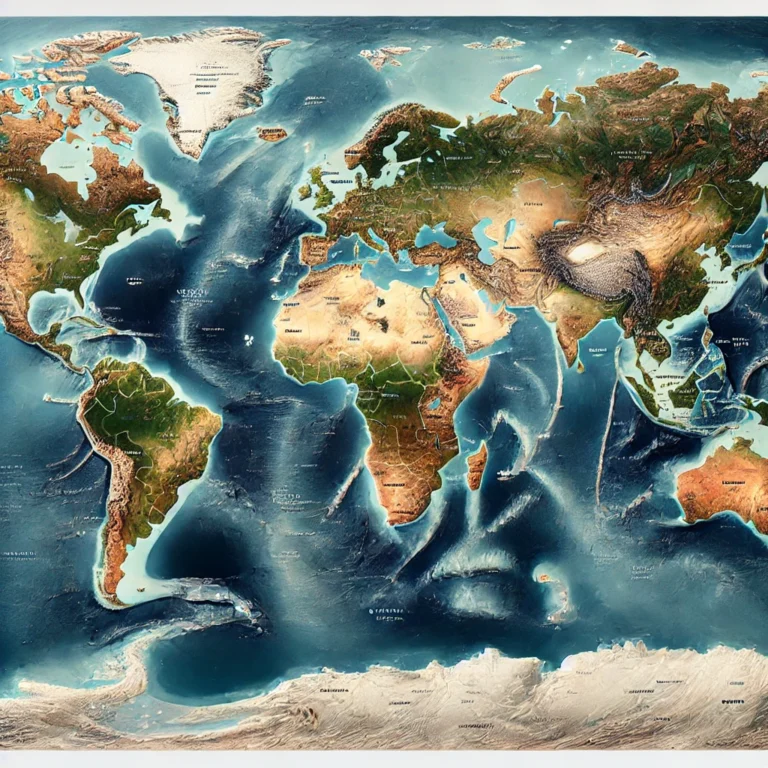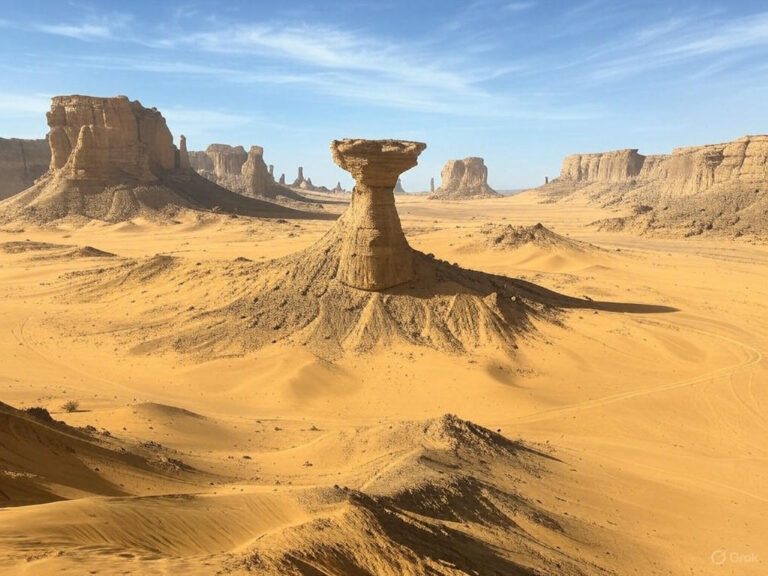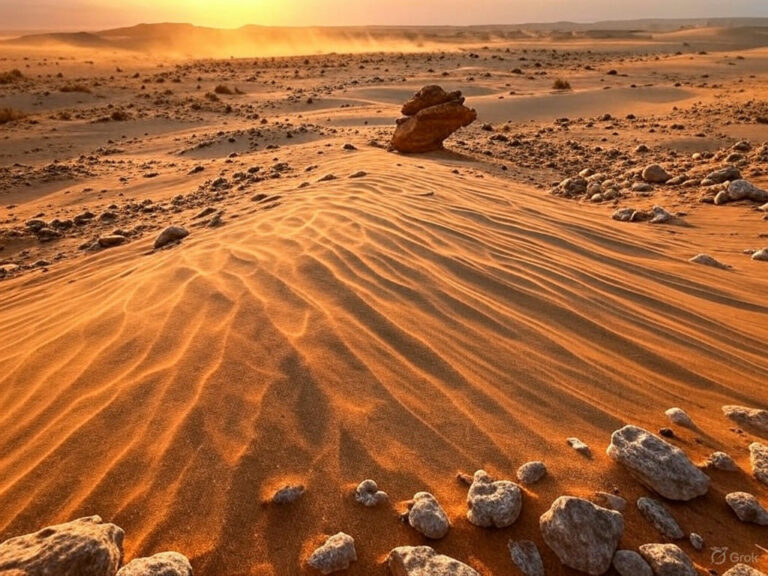Block, Volcanic, and Residual Mountains
Imagine you are a traveler exploring the vast landscapes of Earth. As you move through different terrains, you notice some mountains standing tall and rigid, split apart by deep valleys, while others rise dramatically from volcanic eruptions. Some appear old and worn down, as if time itself has chipped away at them.
These mountains, shaped by the forces of nature, can be classified into three major types:
- Block Mountains – born from Earth’s fractures, standing like giant blocks.
- Volcanic Mountains – fiery and dramatic, formed from the fury of eruptions.
- Residual Mountains – remnants of ancient landscapes, sculpted by erosion.
Let’s embark on a visual journey to understand how these mountains came into existence.
1. BLOCK MOUNTAINS
The Birth of Block Mountains
Suppose you have a large chocolate bar. If you press or pull it from both ends, it may crack. Some pieces might rise up, some might sink. A similar process happens inside the Earth’s crust—only at a much, much larger scale.
How Does It Happen?
- The Earth’s crust is not a single solid piece but is divided into tectonic plates.
- Due to internal forces, sometimes these plates get stretched (tension) or squeezed (compression).
- This results in cracks (faults) forming in the crust.
- Some sections of land rise up, forming Block Mountains.
- Other sections sink down, forming rift valleys.
Examples of Block Mountains
- Vosges Mountains (France) and Black Forest (Germany)—both created due to faulting.
- Satpuras (India)—formed due to crustal movements in the Indian subcontinent.
Note: In general, large scale Block Mountains & rift valleys are due to tension rather than compression
2. VOLCANIC MOUNTAINS: THE FIERY MONSTERS
Now, let’s travel to a volcanic island, where a massive mountain rises from the ocean. At its peak, a crater belches smoke and lava, shaping the land around it.
How Do Volcanic Mountains Form?
- These mountains are also called Mountains of Accumulation because they grow as lava piles up.
- When a volcano erupts, it releases molten rock (lava), ash, and gases.
- Over time, the lava cools and hardens, layer by layer, forming a mountain.
- This process can continue for thousands or even millions of years, making some of the tallest mountains on Earth.
Where Are They Found?
- Most volcanic mountains are found along tectonic plate boundaries, especially in the Pacific Ring of Fire, where frequent volcanic activity occurs.
Famous Volcanic Mountains
- Mount Fuji (Japan) – A sacred and iconic volcano.
- Mauna Loa (Hawaii, USA) – One of the largest volcanoes on Earth.
- Mount Mayon (Philippines) – Known for its near-perfect cone shape.
- Mount Cotopaxi (Ecuador) – One of the highest active volcanoes in the world.
💡 Analogy: Imagine you pour hot wax repeatedly on a surface. The wax cools and builds up over time, just like lava forming a volcanic mountain!
3. RESIDUAL MOUNTAINS: THE SURVIVORS OF TIME
Now, let’s move to an ancient landscape, where the once-mighty mountains have been slowly worn down by wind, water, and time.
How Do Residual Mountains Form?
- These mountains were once tall and imposing, but over millions of years, erosion has worn them down.
- The softer parts of the land eroded away, leaving behind harder rock structures.
- These remnants of old mountains are also called Mountains of Denudation.
Examples of Residual Mountains
- Nilgiri Hills (India) – A result of erosion over millions of years.
- Mount Monadnock (USA) – A classic example of an isolated erosion-resistant mountain.
- Hills of Peninsular India – The remains of ancient, worn-down mountains.
How Plate Tectonics Explains These Mountains
The Plate Tectonic Theory helps us understand why mountains form:
🔹 Block Mountains → Due to faulting in the crust (cracks formed by tectonic forces).
🔹 Volcanic Mountains → Due to magma from the mantle reaching the surface and accumulating.
🔹 Residual Mountains → Due to erosion wearing down old mountains over time.
🏔️ Comparison of Folded, Block, Volcanic, and Residual Mountains
| Feature | Folded Mountains | Block Mountains | Volcanic Mountains | Residual Mountains |
| Formation Process | Formed due to compressional forces that fold the Earth’s crust | Formed due to faulting caused by tensional or compressional forces | Formed due to accumulation of volcanic material (lava, ash, pyroclasts) from volcanic eruptions | Formed due to prolonged erosion of already existing highlands or mountains |
| Main Forces Involved | Compressional forces | Tensional or compressional forces (leading to faulting) | Volcanic activity (igneous processes) | Exogenic forces, primarily erosion and weathering |
| Crustal Movement | Convergent plate boundaries (e.g., continental collision) | Fault block movement due to stress in the lithosphere | Hotspots or divergent boundaries or subduction zones | No new crustal movement involved—remnants of older geological structures |
| Structure | Characterized by anticlines and synclines (folds) | Composed of raised blocks (horsts) and sunken blocks (grabens) | Usually conical in shape with central vent/crater | Irregular and isolated hills or mountain remnants |
| Altitude | Generally very high | Moderate to high depending on uplift | Varies (some volcanic mountains are among the tallest) | Low to moderate, often dissected and worn down |
| Examples (India) | Himalayas, Aravallis (ancient folded) | Satpura Range (faulted parts), Vindhyan escarpments | Barren Island (Andaman), Dhinodhar Hill (Kutch) | Nilgiris (partly residual), Aravallis (also classified as residual due to erosion) |
| Examples (World) | Alps, Rockies, Andes | Black Forest (Germany), Sierra Nevada (USA), Rhine Rift | Mt. Fuji (Japan), Mt. Kilimanjaro (Tanzania), Mt. Mauna Loa (Hawaii) | Highlands of Scotland, Sierra de Córdoba (Argentina), Mesas of USA |
| Geological Significance | Young and tectonically active (except old folded ranges like Aravallis) | Reflect tectonic faulting history and rifting | Indicators of igneous activity and plate movements | Mark erosional stages of older geomorphic features |




